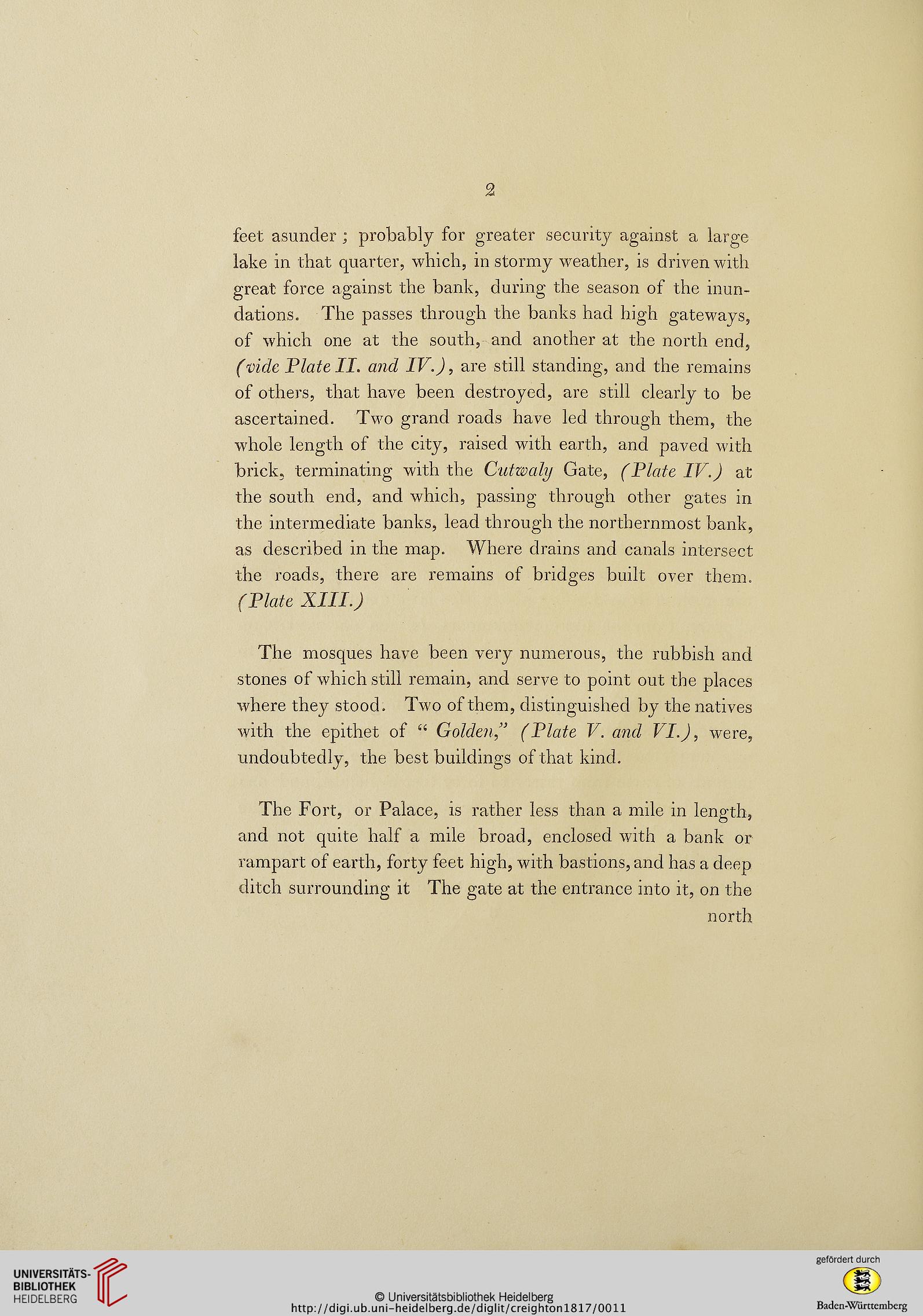2
feet asunder ; probably for greater security against a large
lake in that quarter, which, in stormy weather, is driven with
great force against the bank, during the season of the inun-
dations. The passes through the banks had high gateways,
of which one at the south, and another at the north end,
(vide Plate II. and IV.), are still standing, and the remains
of others, that have been destroyed, are still clearly to be
ascertained. Two grand roads have led through them, the
whole length of the city, raised with earth, and paved with
brick, terminating with the Cutwaly Gate, (Plate IV.) at
the south end, and which, passing through other gates in
the intermediate banks, lead through the northernmost bank,
as described in the map. Where drains and canals intersect
the roads, there are remains of bridges built over them.
(Plate XIII.)
The mosques have been very numerous, the rubbish and
stones of which still remain, and serve to point out the places
where they stood. Two of them, distinguished by the natives
with the epithet of “ Golden ” (Plate V. and VI.), were,
undoubtedly, the best buildings of that kind.
The Fort, or Palace, is rather less than a mile in length,
and not quite half a mile broad, enclosed with a bank or
rampart of earth, forty feet high, with bastions, and has a deep
ditch surrounding it The gate at the entrance into it, on the
north
feet asunder ; probably for greater security against a large
lake in that quarter, which, in stormy weather, is driven with
great force against the bank, during the season of the inun-
dations. The passes through the banks had high gateways,
of which one at the south, and another at the north end,
(vide Plate II. and IV.), are still standing, and the remains
of others, that have been destroyed, are still clearly to be
ascertained. Two grand roads have led through them, the
whole length of the city, raised with earth, and paved with
brick, terminating with the Cutwaly Gate, (Plate IV.) at
the south end, and which, passing through other gates in
the intermediate banks, lead through the northernmost bank,
as described in the map. Where drains and canals intersect
the roads, there are remains of bridges built over them.
(Plate XIII.)
The mosques have been very numerous, the rubbish and
stones of which still remain, and serve to point out the places
where they stood. Two of them, distinguished by the natives
with the epithet of “ Golden ” (Plate V. and VI.), were,
undoubtedly, the best buildings of that kind.
The Fort, or Palace, is rather less than a mile in length,
and not quite half a mile broad, enclosed with a bank or
rampart of earth, forty feet high, with bastions, and has a deep
ditch surrounding it The gate at the entrance into it, on the
north





